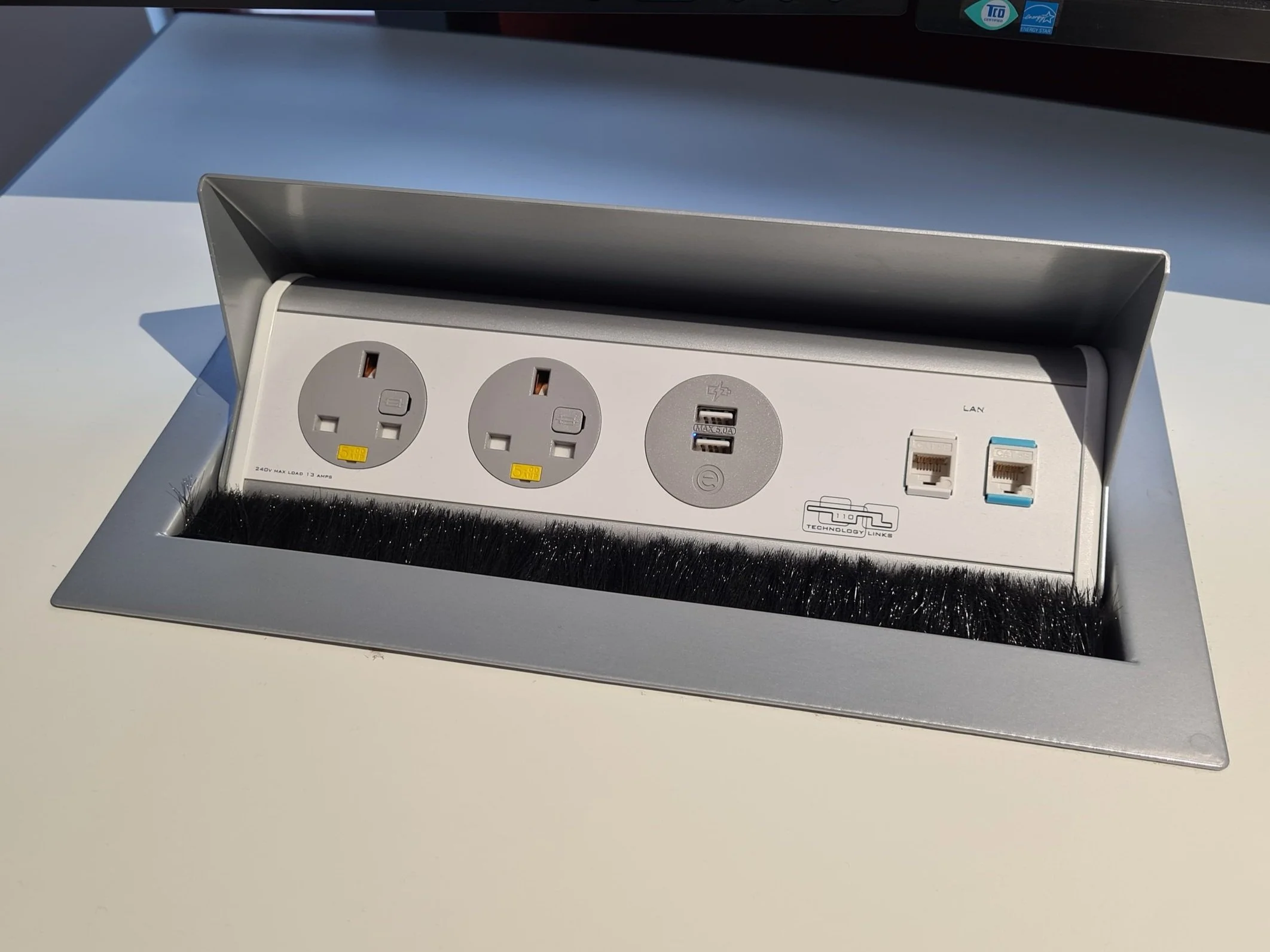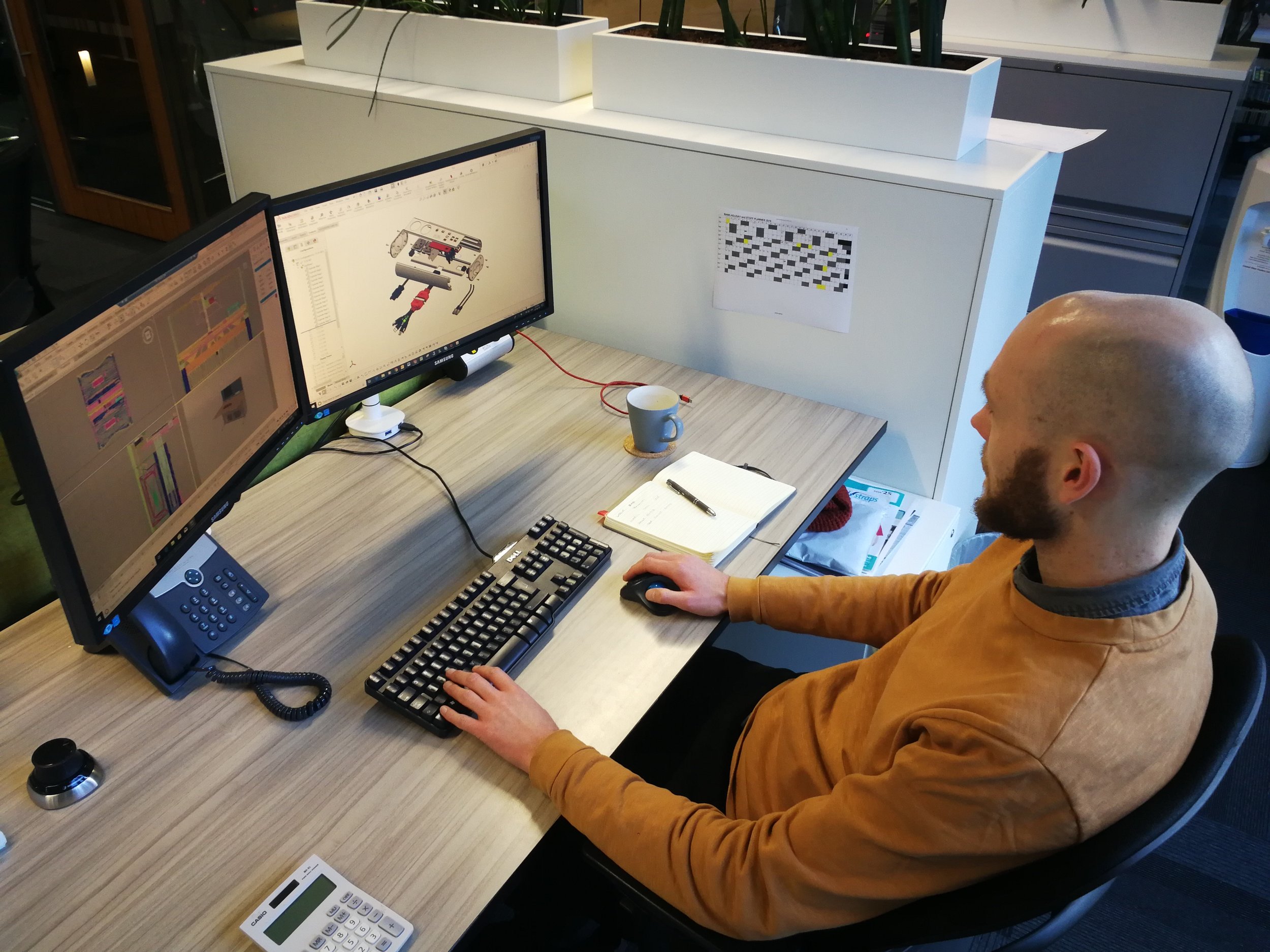Desktop Power Buying Guide
How do you choose the best desktop power unit for your workstation? There are probably more options than you think. Setting up a new workstation is no mean feat. While choosing the perfect desk is foremost in your mind, getting the correct desktop power unit is important too. There are a few types to choose from, so it’s essential to pick the right one. The nature of your work and how much equipment is required are key things to consider.
What is a desktop power unit?
Desktop power units are the set of sockets that supply power and/or data to your laptop, monitors and any other desktop equipment you might be using.
The different types of desktop power unit
Flip-top plug sockets
Flip-top plug sockets are embedded into the desktop. They feature a rotating cover over the top of the desk power outlets. When you want to access the flush mounted desk sockets you pull up the cover to trigger a release mechanism. This gives you more desk space and keeps your desktop uncluttered. They are simple to use.
Desktop mounted sockets
Here the PC power and data outlets are fitted on top of the desk. The units can effectively replicate the connections located at the rear of a PC, i.e. sound, mic, USB etc. This enhances user access and speeds up connectivity without the need to search awkwardly under the desk. The power units are mounted on the desk with clamps or onto the monitor beam. They give easy access to all the sockets.
Wireless Phone Charger
A wireless phone charger helps keep your desk less cluttered. An ARC80 charger actually fits into your desktop. Once connected it provides immediate wireless charging without the need for pesky cables. You can rest your wireless-enabled phone on its flat surface and let it work its magic.
Laptop Docking Station
A laptop docking station makes connecting and disconnecting your computer easier. Rather than having multiple USB, monitor and power cables clutter your desk you can easily place your laptop on the docking station. This converts it into a desktop.
A USB docking station turns your laptop into a desktop powerhouse. It provides a dual display port supply to monitors, LAN, USB3 connections, USBC charging and more. All the cables feed into the rear of the laptop docking station creating a tidier desk surface with more space to work.
Below desktop cable trays
This is an unobtrusive solution. The sockets are positioned below the desk in a tray. The desktop can be easily slid forward so the user can then access the below desktop power. Under desk power sockets give you more desk space and keeps your desktop uncluttered. They are also a cost-effective solution.
What desktop ports do you need?
Plug sockets - The number of desk plug sockets required will depend on how much tech and equipment you use. Control room operators and traders need plenty of sockets to support a variety of desktop IT. A standard office desk may only need one or two desktop power sockets
USB ports - a desk USB hub is essential for desktop connectivity, especially if you have a PC situated below desktop level. USB ports are needed for a mouse, keyboard, microphones and headsets. Desktop USB ports also mean you won’t need USB extension cables cluttering the desk.
USB charger - although it’s possible to charge a phone or other accessories in a passive USB port, a powered USB charging port will do it much faster. This is a helpful option to have on your desktop power unit!
LAN port - This is useful for plugging laptops straight into the LAN
Having the right desktop power unit can make your working day a lot easier. From having enough sockets and ports for your equipment needs to keeping your desk clutter free, there's quite a lot to consider.
Looking for the perfect desktop power solution? At Technology Desking we stock a range of options to fit your needs. We can design a custom desktop power unit with sockets and ports that meet your exact requirements. Take a look at our products here.






